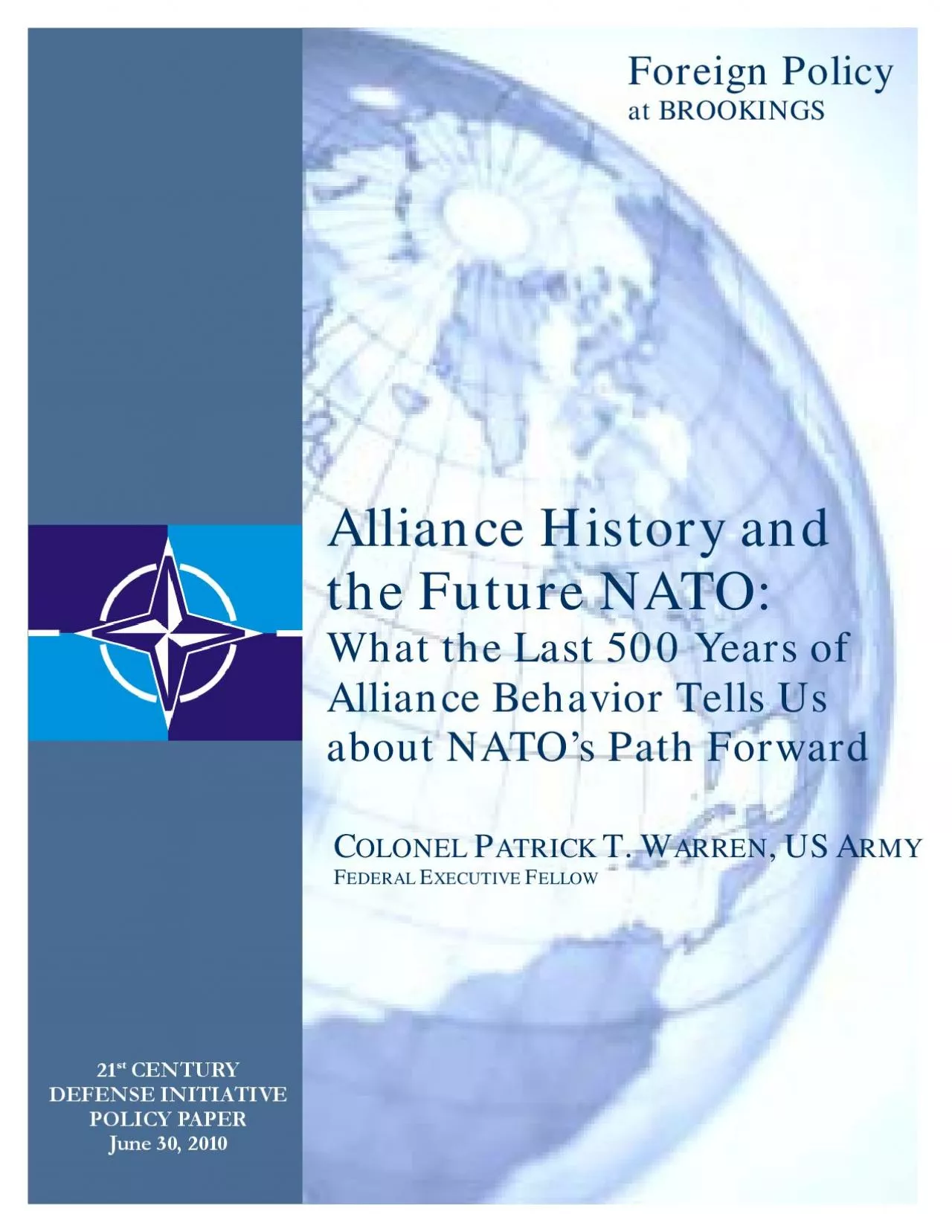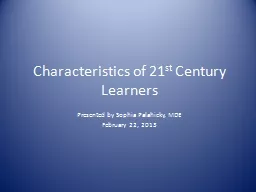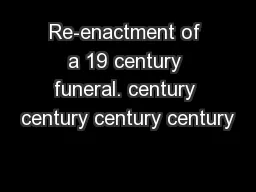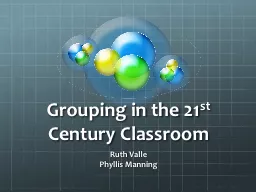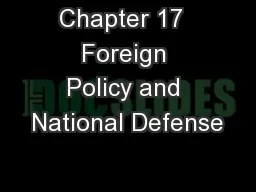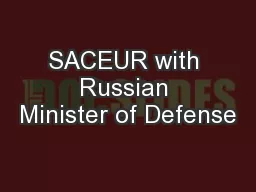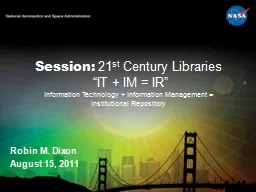PDF-21st CENTURY DEFENSE INITIATIVE POLICY PAJune 30 2010
Author : cora | Published Date : 2021-06-10
Foreign Polic y at BROOKINGS COLONEL PATRICK T W ARREN US A RMY FEDERAL EXECUTIVE FELLOW A lliance Histor y and the Future NATO What the Last 500 Years of Alliance
Presentation Embed Code
Download Presentation
Download Presentation The PPT/PDF document "21st CENTURY DEFENSE INITIATIVE POLICY P..." is the property of its rightful owner. Permission is granted to download and print the materials on this website for personal, non-commercial use only, and to display it on your personal computer provided you do not modify the materials and that you retain all copyright notices contained in the materials. By downloading content from our website, you accept the terms of this agreement.
21st CENTURY DEFENSE INITIATIVE POLICY PAJune 30 2010: Transcript
Download Rules Of Document
"21st CENTURY DEFENSE INITIATIVE POLICY PAJune 30 2010"The content belongs to its owner. You may download and print it for personal use, without modification, and keep all copyright notices. By downloading, you agree to these terms.
Related Documents

